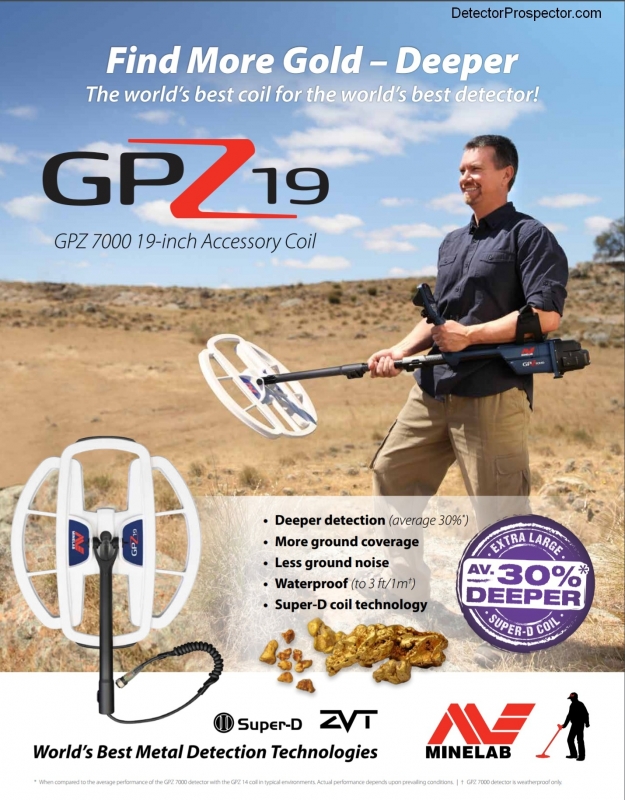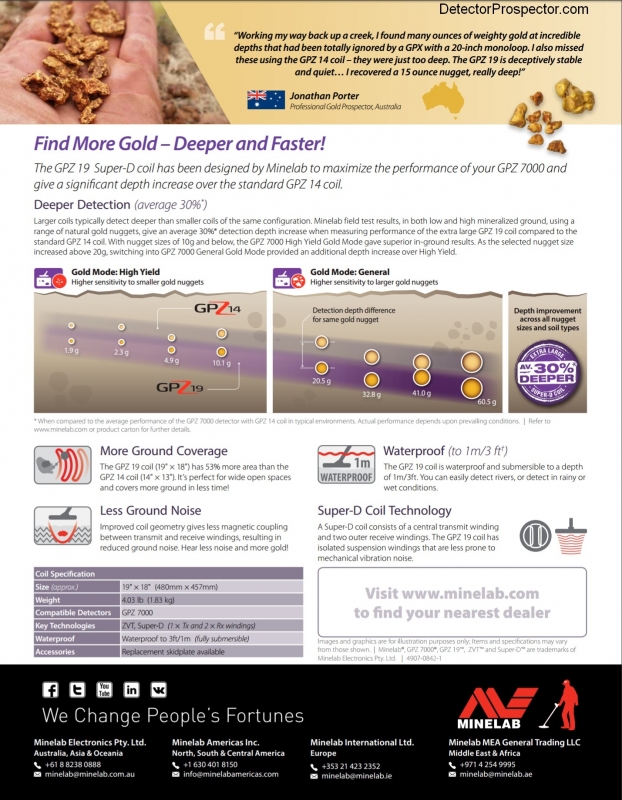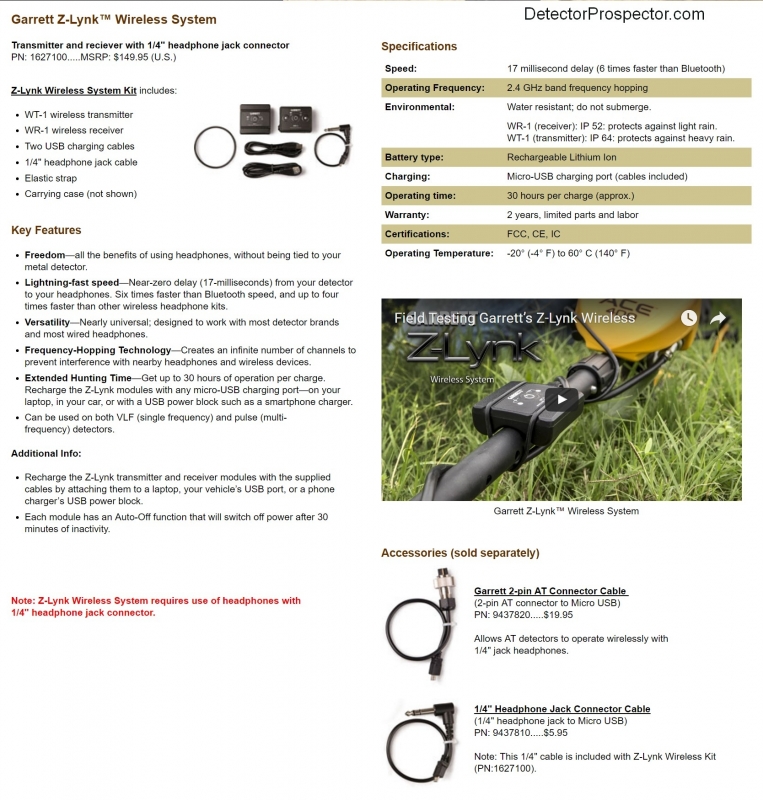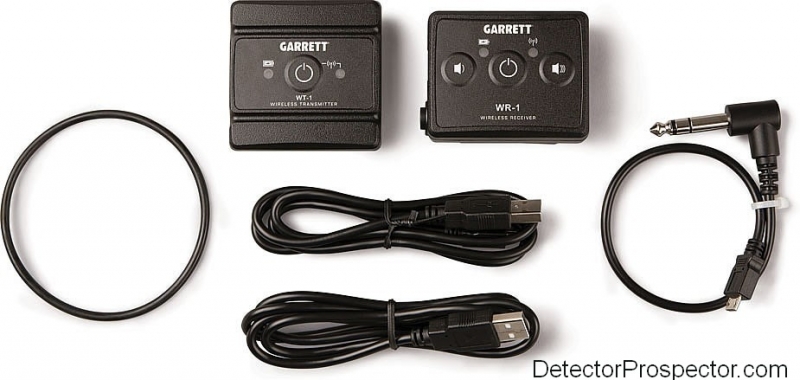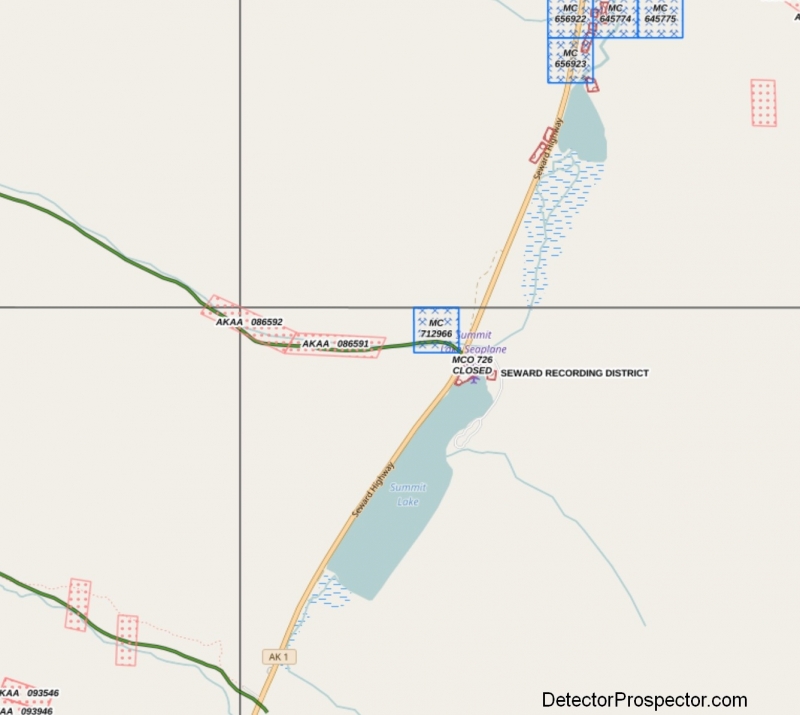-
Posts
19,734 -
Joined
-
Days Won
1,565
Content Type
Forums
Detector Prospector Home
Detector Database
Downloads
Everything posted by Steve Herschbach
-

Coiltek Will Start Making Coils For White's
Steve Herschbach replied to Ridge Runner's topic in White's Metal Detectors
I disagree. It was hit or miss using Coiltek coils designed for Minelab detectors on the White's TDI in the past, and in many cases the pulse delay had to be lowered to prevent overloads. Far better the coils be designed specifically for the machines they are to be used on. Thanks for the link Goldpick. -

Coiltek Will Start Making Coils For White's
Steve Herschbach replied to Ridge Runner's topic in White's Metal Detectors
When referring to information from other websites, please link to it. Thanks! http://md-hunter.com/minelab-loses-coiltek-exclusive-new-2016/ I got a chuckle over how it is spun as Minelab losing their "exclusive" with Coiltek. Just like any other aftermarket coil manufacturer the only way to expand sales ultimately is to expand the number of brands supported. Especially true now that the Minelab PI lineup that was the real bread and butter for Coiltek has come to an end. I could not find these coils on the Coiltek website nor any mention of them at all anywhere else. Maybe Tom can confirm? -

Momma Nature's Art Work!
Steve Herschbach replied to LuckyLundy's topic in Rocks, Minerals, Gems & Geology
Very, VERY nice Rick - thanks for sharing those photos. Nugget size is often secondary to nugget quality and those are high quality specimens! -
I never use 10 x 10 mode myself for the reasons you mention, just 20 x 20 or 100 x 100 for the big picture. I do indeed have many things I would change or improve but the focus of my articles is on what can be done with what we have. For example, in this day and age of cheap memory I sure would like to be able to hold more than 100 Findpoints in my unit at one time, and at least a full weeks worth of Geohunts. I may do a very detailed article on how to hack the GPZ and XChange databases directly at some time in the future but I keep hoping I can get Minelab to add an import/export function instead before then. The lack of import/export function is the number one thing holding the system back in my opinion.
-
Hi Steve, I am guessing you are referring to XChange instead of the GPZ itself? The GPZ has the two options I outlined above for on screen display. However, once the information is imported into XChange you can also display in full decimal. No way to merge Geohunts without exporting the data, doing the merge manually, and then importing. With no built in export/import fundtion at this time this requires manipulating the database directly. Not a good idea unless you are familiar with such things but info needed to get a knoweledgeable person going on that can be found at
-
I hate to admit it but I rarely dig BIG nuggets. Five grams and under accounts for the vast majority of it, and the GPZ 19 will reportedly offer excellent depth improvements on these bread and butter nuggets. For the places most of us hunt in the U.S. I am skeptical of the likelihood of very large nuggets still remaining that have been missed at great depths, but I am more than willing to bet on nuggets of a few grams missed just an inch or two deeper.
-
Rick, from the page referenced above "All products are supported for a period of at least 7 years after they are discontinued." The only notice you get is when the product gets listed on the page as discontinued, but you are safe for at least seven years after they are discontinued. The SDC 2300 is still current production so such a date is very far in the future.
-
Product - GPZ 19 Application - Gold Prospecting (Waterproof coil to 1m/3ft) Technology - ZVT, Super-D (1 × Tx and 2 × Rx windings) Length - 19" × 18" (480mm × 457mm) Weight - 1.83 kg (4.03 lb) Warranty - 3 years Product Information Page http://www.minelab.com/usa/accessories-1/gpz-19-1 “The GPZ 19 is deceptively stable and quiet... I recovered a 15 ounce nugget, really deep!” “Working my way back up a creek, I found many ounces of weighty gold at incredible depths that had been totally ignored by a GPX with a 20 inch monoloop. I also missed these using the GPZ 14 coil – they were just too deep. The GPZ 19 is deceptively stable and quiet… I recovered a 15 ounce nugget, really deep!" Jonathan Porter - Professional Gold Prospector, Australia “ I just couldn’t believe how smooth it was running for such a big coil!" “When using Normal Ground Type (in milder soils) I’ve actually been able to run a higher Sensitivity setting. I just couldn’t believe how smooth it was running for such a big coil, and I blooded the coil with its first piece after a short time, a very small flat piece of about 0.1g which proved that the big coil hasn’t given up much sensitivity." Nenad Lonic - Phase Technical Metal Detection & Technical Services, Australia (Click on photos below for larger versions) Does It Really Detect 30% Deeper? - http://www.minelab.com/usa/go-minelabbing/treasure-talk/the-gpz-19-coil-does-it-really-detect-30-deeper *When compared to the average performance of the GPZ 7000 detector with the GPZ 14 coil in typical environments. Actual performance depends upon prevailing conditions. Brochure PDF File http://www.minelab.com/__files/f/289337/4907-0843-1 Brochure, GPZ 19 Letter EN_WEB.pdf
-
Garrett News Release - Lightning-Fast Garrett Z-LinkTM Wireless Technology As announced earlier this year, Garrett will soon be rolling out wireless technology. The first introduction, to be formally announced later this fall, will be a Wireless Transmitter/Receiver Kit that will work with virtually any brand of metal detector and/or headphone combination. These wireless modules will employ unique Garrett Z-Link Wireless Technology providing a near-zero delay time between the detector and headphones. The Garrett units will operate six times faster than Bluetooth (the speed claimed by some current wireless transmitter kits). This means you are hearing the target signal while the searchcoil is directly over the target, helping you to pinpoint and recovery your targets more accurately, The new Wireless Transmitter/Receiver Kits can be ordered with either a 1/4-inch headphone jack cable (PN: 1627100) or a Garrett 2-pin AT connector cable (PN: 1627110, for use on AT Pro, AT Gold, or ATX units). The transmitter and receiver modules can be recharged with the supplied USB cables by attaching them to your laptop, your vehicle's USB port, or to a phone charger's USB power block. When fully charged, the units will provide up to 30 hours of operation-significantly longer field time than offered by other wireless models. More product information, including pricing will be announced later. Seen below is one of the Wireless Transmitter/Receiver Kits. Following the release of the new Garrett Wireless Transmitter/Receiver Kit, the Garrett Z-Link Wireless Technology will be implemented into future metal detectors and headphones. One of the products sure to create attention will be a new All-Terrain (AT) product that is slated for a spring 2017 release. Just like the current AT Pro, AT Gold, ATX, and Pro-Pointer AT, this new machine will maintain its waterproof integrity while adding exciting new features, including built-in Garrett Z-Link Wireless Technology for headphones. More specific details on this detector and other wireless accessories will be made available in early 2017.
-
It is also very common for silver to leach out of the surface of nuggets, resulting in a thin but purer "rind" of gold on the surface of the nugget. This is seen when jewelers buff a naturally gold nugget, and it turns a lighter gold color when the rind is buffed off. It also can give misleading readings of the overall purity of the nugget if only the original natural surface of the nugget is tested. COMPOSITIONS OF PLACER GOLD IN THE RAMPART-EUREKA-MANLEY-TOFTY AREA, EASTERN TANANA AND WESTERN LIVENGOOD QUADRANGLES, CENTRAL INTERIOR ALASKA, DETERMINED BY ELECTRON MICROPROBE ANALYSIS by - R.J. Newberry Department of Geology University of Alaska-Fairbanks K.H. Clautice Alaska Division of Geological & Geophysical Surveys Download at: http://www.dggs.alaska.gov/webpubs/dggs/pdf/text/pdf1997_049.PDF
-
The mining world does not usually use the karat scale when talking about gold purity. Gold is discussed in terms of "fineness". The scale runs from 0 - 1000. For example, gold might be said to be 830 fine, which is the same as 83% gold. 842 fine would be 84.2% gold. There being no such thing as absolutely pure gold gold bars will be stamped 999.99 fine. Natural gold in the 900 range would be high purity gold, the 800 range more the average run of the mill stuff, and under 800 low purity stuff. The lower purity types are sometimes referred to as electrum. Alaska has average purity gold in general but in reality all types can be found. California and Australia are noted as having high purity gold. Nevada gold is usually average to lower purity with electrum not uncommon. Reports like this can be Googled: Fineness of Gold from Alaska Placers by Philip S. Smith1937 USGS Bulletin 910-Chttp://www.dggs.alaska.gov/webpubs/usgs/b/text/b0910c.PDFAccompanying map http://www.dggs.alaska.gov/webpubs/usgs/b/oversized/b0910cpt03.PDF
-

XP DEUS Goes High Frequency?
Steve Herschbach replied to Steve Herschbach's topic in XP Metal Detectors
Welcome to the forum! From http://www.detectorprospector.com/forum/topic/2464-xp-deus-v4-new-accessories-announcement/?do=findComment&comment=28697 "A test phase will take place in October and November 2016, and then, we will be able to announce a launch date." In other words, there is no official launch date yet. -

Deus Question For Steve (or Anyone For That Matter)
Steve Herschbach replied to D&P-OR's topic in XP Metal Detectors
Lots of details on the new software and accessories at http://www.detectorprospector.com/forum/topic/2464-xp-deus-v4-new-accessories-announcement/ According to Andy Sabisch the new frequencies using the new coils are 14.5 kHz, 29 kHz, and 53 kHz. This puts the XP V4 in the GMT (48 kHz) and Gold Racer 56 kHz) category but not quite Gold Bug 2 country. I think the small GB2 coil is one of the best available for hunting small gold. At 14.5 kHz you still have an excellent general purpose frequency. Examples: Garrett AT Pro 15 kHz White's MXT 14 kHz Fisher F75 13 kHz Makro Racer 14 kHz One way to look at it is that 14.5 kHz is a great compromise between the 12 kHz and 18 kHz frequencies that most people use when they run a DEUS. The real key will be which frequency is the primary frequency - the other frequencies are harmonics and do not make as efficient use of the coil as the primary frequency. If they really are doing all they can to make this a nugget detecting option for Africa then the coil will be optimized at 53 kHz (or 55 khz). It could just as well be one if the other frequencies though. Regardless, I think fears that the new coils may not be all that great for coin detecting are unfounded. In fact, at 5.5" x 9" the new elliptical should be better at sniffing out coins in trash than the current smallest 9" coil option. No matter what the number of targets under the coil is the number one factor when it comes to target id accuracy and the new elliptical coil covers almost half as much ground area as the 9" round coil. I think people are in for a pleasant surprise when it comes to coin, relic, and jewelry detecting. Just my opinion of course - we won't know for sure until the new coil is available and gets some use by various people under varying conditions. -

Non Paying Mining Claim Signer
Steve Herschbach replied to nvchris's topic in Detector Prospector Forum
I have actually gone through the process Chris so it can be done but there is a cost, mainly in newspaper ads. If you are lucky all you may need is proof they got a letter from you. In our case they were gone off the face of earth as far as we could tell so we had to go the newspaper route. http://uscode.house.gov/view.xhtml?req=granuleid:USC-prelim-title30-section28&num=0&edition=prelim "Upon the failure of any one of several coowners to contribute his proportion of the expenditures required hereby, the coowners who have performed the labor or made the improvements may, at the expiration of the year, give such delinquent co-owner personal notice in writing or notice by publication in the newspaper published nearest the claim, for at least once a week for ninety days, and if at the expiration of ninety days after such notice in writing or by publication such delinquent should fail or refuse to contribute his proportion of the expenditure required by this section, his interest in the claim shall become the property of his co-owners who have made the required expenditures." This all has to be documented with BLM and I advise coordinating with a person at BLM that the process is being undertaken to make sure they get all the information they want (copies of ads, certified letters, etc.). Example of such an ad https://news.google.com/newspapers?nid=886&dat=19670921&id=QYNPAAAAIBAJ&sjid=wVADAAAAIBAJ&pg=3857,3250719 -

A Walk Around The Block With My MX Sport Today
Steve Herschbach replied to Ridge Runner's topic in White's Metal Detectors
One for auction on eBay right now with lower rod included http://www.ebay.com/itm/Whites-5-3-eclipse-coil-/332001195139?hash=item4d4cd03483:g:9PcAAOSw-CpYAYi4 -
Alaska Mining Claims Mapper http://akmining.info/ Mostly forest service with state land transfers. Red claims federal, blue are state. Northlander #2 is the state claim MC712966. Full case abstract at http://dnr.alaska.gov/projects/las/#filenumber/712966/searchtype/casefile/filetype/ADL/reporttype/abstract/landflag/y with mailing address of claim owner. Or look up his phone number. Or ask Brian Berkhahn at Alaska Mining & Diving if he knows how to contact him. The Forest Service and or State may also have information on access. Since this is a GPAA listed claim you really should get in contact with the local GPAA chapter http://www.alaskagolddiggers.org/
-
What state is the claim in? What is the general land status (forest service, BLM)?
-

Minelab 705 Prospect Vs All Metal Mode
Steve Herschbach replied to pono1's topic in Minelab X-Terra Forum
Just remember no discrimination system is perfect - when in doubt, dig it out! -

Minelab 705 Prospect Vs All Metal Mode
Steve Herschbach replied to pono1's topic in Minelab X-Terra Forum
Hi Dave, Welcome to the forum! Sorry I missed this post for so long. The forum has been busy and so have I. I really wish Minelab had not called the discrimination mode with all segments set to accept an all metal mode. In metal detecting land that has always referred to a true unfiltered threshold based all metal mode, which on the 705 is called Prospect mode. This has confused and continues to confuse many people. So much so I wrote an article about it at http://www.detectorprospector.com/gold-prospecting-guides/steves-guide-metal-detector-mixed-modes.htm The 705 all metal mode still filters items through the discrimination circuits but then beeps on everything (all metals). Internally it is still trying to categorize targets and this leads to a depth loss. The Prospect mode is a true threshold based all metal mode, which is much more powerful. Simply toggling between the two easily proves this. The part that I admit I am unclear on myself is how the iron mask differs from standard discrimination except the obvious - it applies to ferrous only and so uses a different methodology that appears to have minimal impact on performance. It may be a form of mixed mode processing, also discussed in my article.

